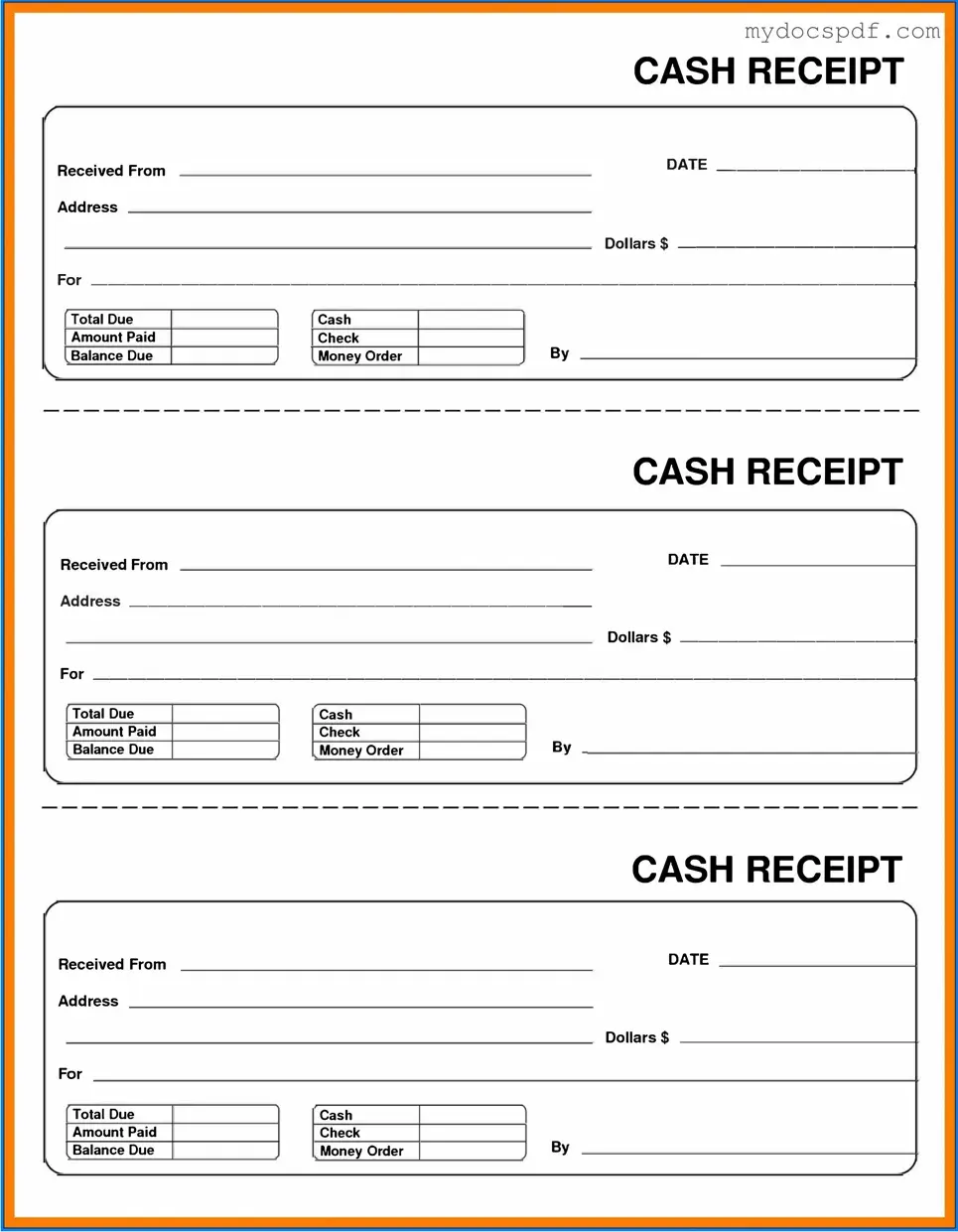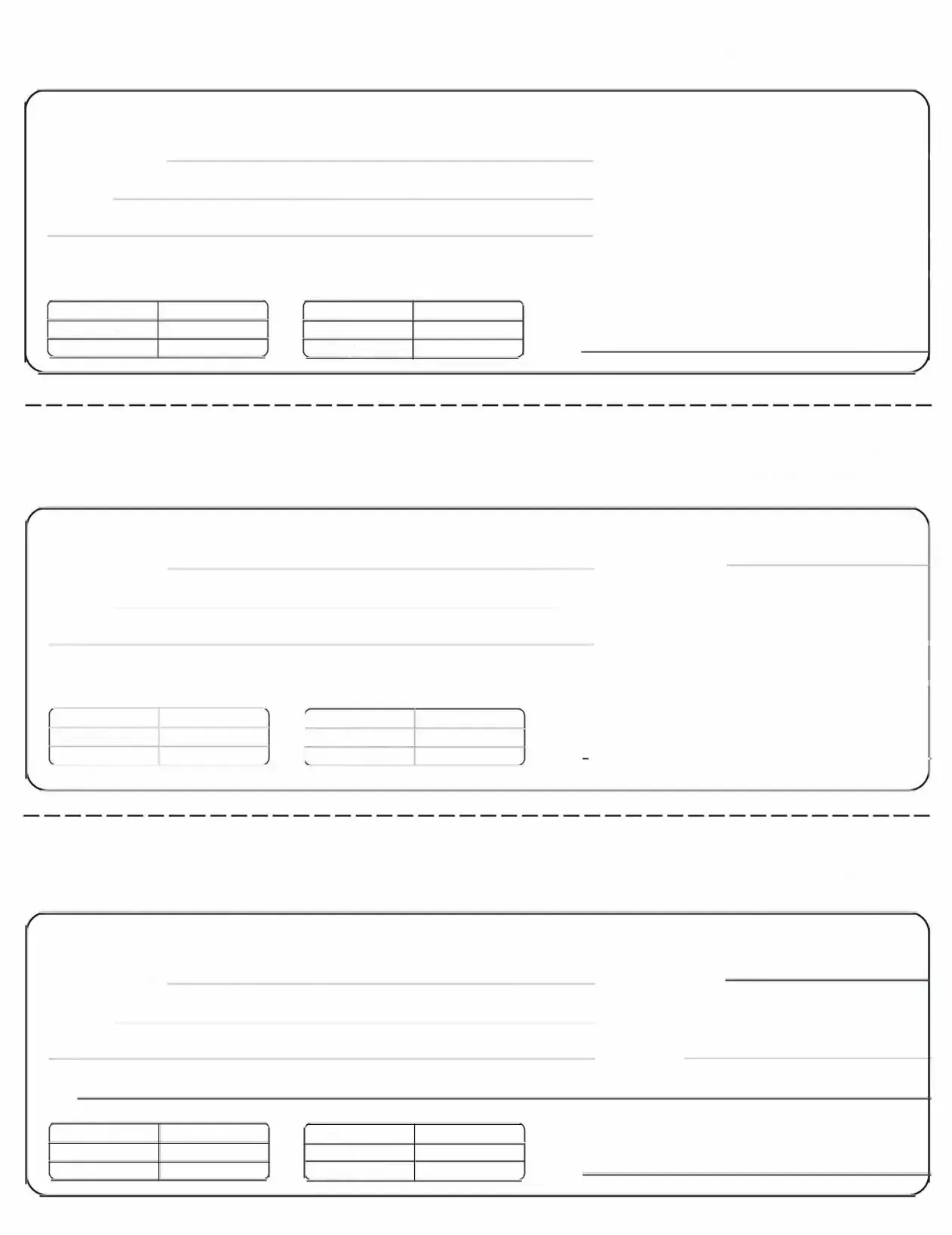The Cash Receipt form serves as a vital document in the world of financial transactions, capturing essential information regarding the receipt of cash payments. This form typically includes details such as the date of the transaction, the name of the payer, and the amount received. It often features a unique receipt number for tracking purposes, ensuring that each transaction can be easily referenced in the future. Additionally, the form may outline the purpose of the payment, whether it be for goods, services, or other financial obligations. By documenting these transactions, the Cash Receipt form not only aids in maintaining accurate financial records but also provides a layer of accountability for both the payer and the recipient. In many organizations, this form is integral to the bookkeeping process, facilitating transparency and helping to prevent discrepancies in financial reporting.

